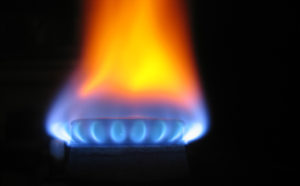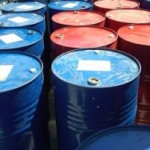 Natural gas fell in early European trading on Tuesday as active weather across the US drove overall lower cooling demand compared to last week ahead of an expected larger-than-average inventory build due to be reported on Thursday.
Natural gas fell in early European trading on Tuesday as active weather across the US drove overall lower cooling demand compared to last week ahead of an expected larger-than-average inventory build due to be reported on Thursday.
Natural gas for delivery in September traded 0.11% lower at $2.839 per million British thermal units at 08:22 GMT, shifting in a daily range of $2.841-$2.821. The contract rose 1.6% on Monday to $2.842, the highest close since July 29th.
According to NatGasWeather.com, natural gas demand will be high to very high over Texas and the South through August 17th, and moderate across the northern US, with very warm to hot weather set to persist over West Coast, South and East the following seven days, while the northern Rockies and interior West are near normal.
A weather system tracking across the eastern US with showers and thunderstorms will bring slightly cooler than normal temperatures, including briefly into the Southeast. Texas and the South, however, will see no change from recent patterns and will remain the nations hottest spot as highs remain anchored in the upper 90s to mid 100s, driving the strongest regional cooling demand this year, although the uncomfortable conditions will gradually ease as the week progresses.
Conditions, however, are expected to once again warm up over much of the US late this weekend going into early next week, NatGasWeather.com said, including over the northeastern US. Very warm to hot temperatures will continue to dominate the southern and eastern US next week, including over the high consuming states of Texas and California, and it will also get occasionally quite warm over the southern Great Lakes and Ohio Valley. Ongoing battles between the hot dome of high pressure and additional cooler Canadian weather systems trying to push into the northern US will be of main interest, with the scales currently tipped in favor of the ridge.
Temperatures
According to AccuWeather.com, the high in New York on August 12th will be 80 degrees Fahrenheit, 3 below usual, followed by a jump to the mid and upper 80s through August 25th. Readings in Chicago will peak at 77-78 degrees today and tomorrow, compared to the average 82-83, before rising into the mid 80s the next five days.
Down South, highs over Houston will remain anchored at 100-104 degrees through August 13th, well above the usual 93, before gradually dropping to the low 90s for the rest of the month. On the West Coast, Los Angeles will peak at 80 degrees today, compared to the average 84, followed by a jump to 89-92 degrees through August 16th.
Inventories
The Energy Information Administration said last Thursday that US natural gas inventories rose by 32 billion cubic feet in the week ended July 31st, reflecting very warm weather across almost the entire country during the tracked period. The build was below analysts’ projections for a 42 bcf gain and the five-year average build for the period of 53 bcf. Total gas held in US storage hubs amounted to 2.912 trillion cubic feet, narrowing a surplus over the five-year average of 2.848 trillion to 2.2% from 3.0% a week earlier.
This week’s build, however, will be much higher as cooler temperatures across the northern US last week are factored in. Thursday’s report is expected to show a build of about 60 bcf, exceeding the average 48 bcf for the week ended August 7th, while supplies rose by 79 bcf a year ago.
The following report, due out on August 20th, will likely show a slightly higher inventory gain due to continued cooler conditions across the North, but very strong cooling demand over the southern half of the US will keep positive inventory changes near the five-year average. Next week’s data will probably show a build of about 65 bcf for the week ended August 14th, compared to the five-year average stockpiles increase of 54 bcf, while supplies rose by 86 bcf a year earlier.
Pivot points
According to Binary Tribune’s daily analysis, September natural gas futures’ central pivot point stands at $2.837. In case the contract penetrates the first resistance level at $2.857 per million British thermal units, it will encounter next resistance at $2.871. If breached, upside movement may attempt to advance to $2.891 per mBtu.
If the energy source drops below its S1 level at $2.823 per mBtu, it will next see support at $2.803. In case the second key support zone is breached, the power-station fuel’s downward movement may extend to $2.789 per mBtu.
In weekly terms, the central pivot point is at $2.789. The three key resistance levels are as follows: R1 – $2.872, R2 – $2.945, R3 – $3.028. The three key support levels are: S1 – $2.716, S2 – $2.633, S3 – $2.560.





